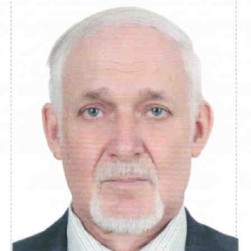Hydrogen and Syngas Generation
A special issue of Energies (ISSN 1996-1073). This special issue belongs to the section "A5: Hydrogen Energy".
Deadline for manuscript submissions: closed (23 July 2021) | Viewed by 7757
Special Issue Editors
Interests: heterogeneous catalysis of red-ox processes for energy production, including solid oxide fuel cells; transformation of biofuels into syngas and hydrogen; advanced technologies of nanophase and nanocomposite materials synthesis; design of structured functionally graded materials for solid oxide fuel cells, monolithic catalysts for fuels transformation into syngas and hydrogen; oxygen/hydrogen separation membranes for catalytic reactors of syngas/hydrogen generation
Special Issues, Collections and Topics in MDPI journals
Interests: environmental ceramics; functional coatings; surface phenomena; energy-related applications of ceramics and coatings; catalysts
Special Issues, Collections and Topics in MDPI journals
Interests: MOFs; sono(electro)chemistry; photocatalysis; AOPs; environment; materials for energy applications; electrochemical conversion and storage
Special Issues, Collections and Topics in MDPI journals
Special Issue Information
Dear Colleagues,
The Guest Editors are inviting submissions to a Special Issue of Energies, titled “Hydrogen and Syngas Generation”. These topics are related to vital hydrogen and renewable energy fields including catalytic transformation of biogas/biofuels into syngas and hydrogen on structured catalysts for feeding fuel cells and synfuels production and hydrogen and syngas generation in catalytic reactors equipped with hydrogen/oxygen separation membranes or in solid oxide electrolysers.
This Special Issue will deal with novel approaches to designing efficient catalysts of these processes and their operation optimization via elucidation of atomic-scale features of reaction mechanism; synthesis of nanocomposite active components by new methods and detailed characterization of their real structure, surface properties, and reactivity; and mathematical modeling of real device performance, taking into account heat and mass transfer processes. Topics of interest for publication include, but are not limited to, the following:
- Design of new types of nanocomposite active components for catalysts of syngas and hydrogen generation;
- Design of structured heat-conducting catalysts for biogas/biofuels transformation into syngas by partial oxidation, steam/dry, or autothermal reforming;
- Internal reforming of biofuels in SOFC;
- Design and testing of asymmetric supported nanocomposite membranes for oxygen separation from air (to be used for biofuels oxidation) or hydrogen separation from syngas;
- Design and testing of structured catalysts for water gas shift reaction and preferential CO oxidation in hydrogen feeds;
- Design and testing of SOE for transformation of water-CO2 feeds into syngas;
- Mathematical modeling of structured catalysts, catalytic membrane, SOFC, and SOE performance;
- Syngas and hydrogen generation in redox cycles for complex oxide/metal systems with a high oxygen mobility and storage capacity;
- Performance stability to coking and sintering;
- Hydrogen generation by interaction of Al-based alloys with water.
Prof. Dr. Vassilis Stathopoulos
Prof. Dr. Christos Argirusis
Guest Editors
Manuscript Submission Information
Manuscripts should be submitted online at www.mdpi.com by registering and logging in to this website. Once you are registered, click here to go to the submission form. Manuscripts can be submitted until the deadline. All submissions that pass pre-check are peer-reviewed. Accepted papers will be published continuously in the journal (as soon as accepted) and will be listed together on the special issue website. Research articles, review articles as well as short communications are invited. For planned papers, a title and short abstract (about 100 words) can be sent to the Editorial Office for announcement on this website.
Submitted manuscripts should not have been published previously, nor be under consideration for publication elsewhere (except conference proceedings papers). All manuscripts are thoroughly refereed through a single-blind peer-review process. A guide for authors and other relevant information for submission of manuscripts is available on the Instructions for Authors page. Energies is an international peer-reviewed open access semimonthly journal published by MDPI.
Please visit the Instructions for Authors page before submitting a manuscript. The Article Processing Charge (APC) for publication in this open access journal is 2600 CHF (Swiss Francs). Submitted papers should be well formatted and use good English. Authors may use MDPI's English editing service prior to publication or during author revisions.
Keywords
- Hydrogen and syngas generation
- Structured catalysts
- Hydrogen or oxygen separation membranes
- Nanocomposites with high oxygen/hydrogen mobility
- Biofuels
- Partial oxidation, steam reforming, dry reforming, autothermal reforming
- Stability to coking
- Energy storage system
- Renewable energy
- Mathematical modeling
- SOFC, SOE







